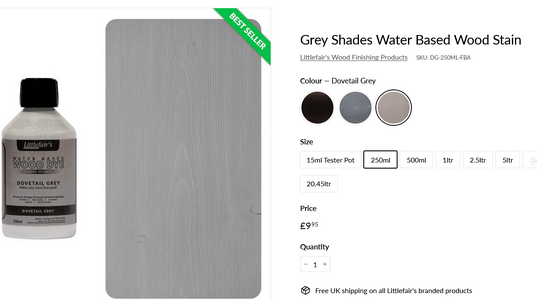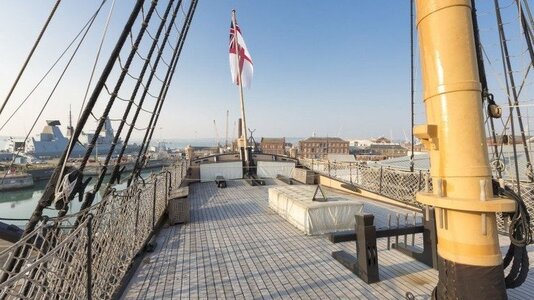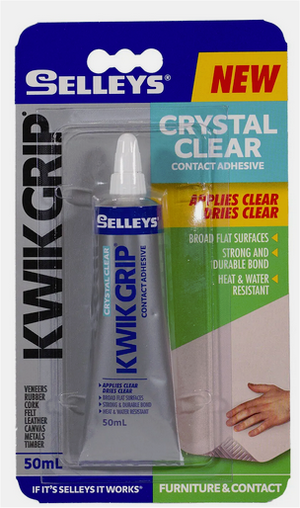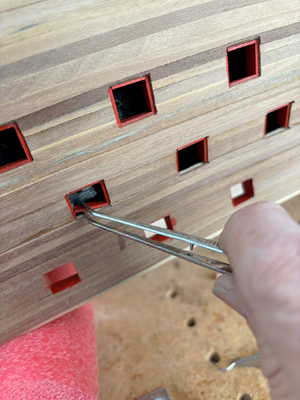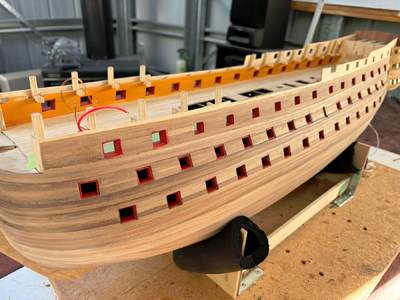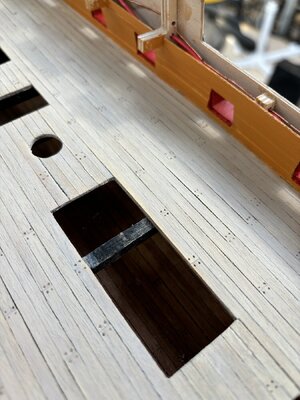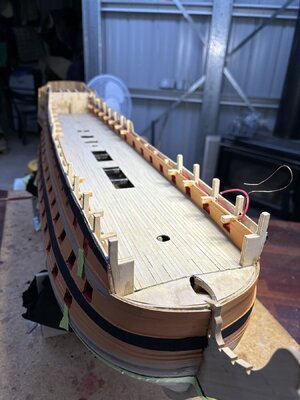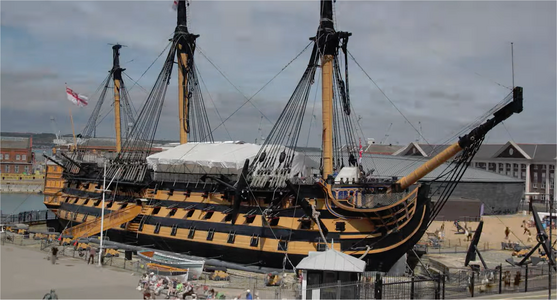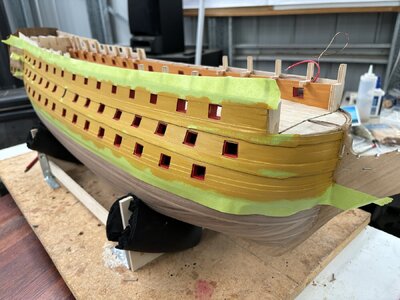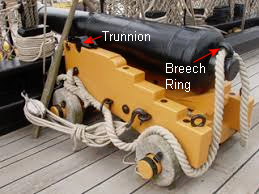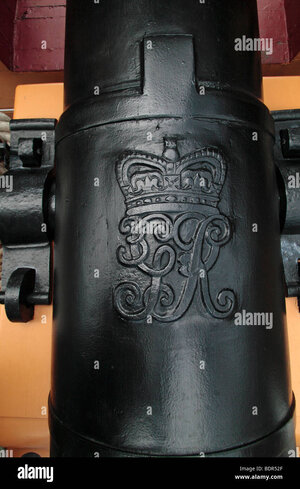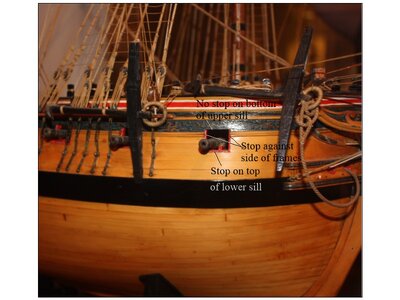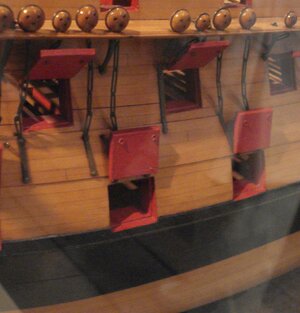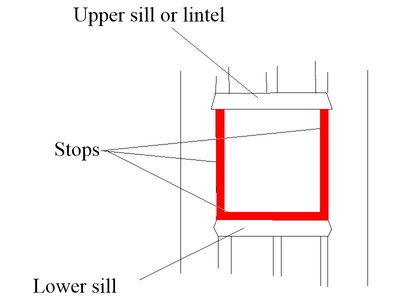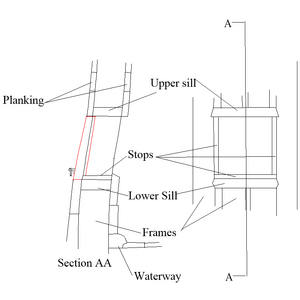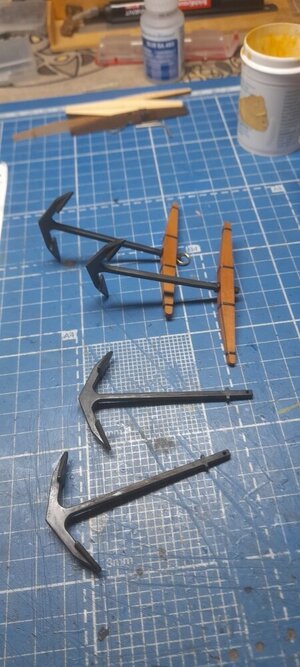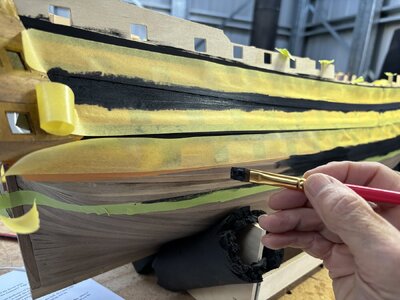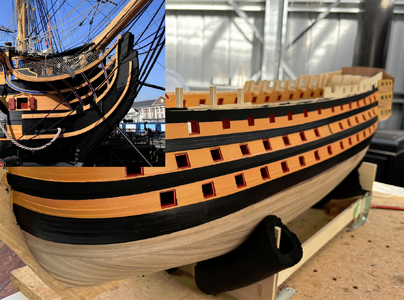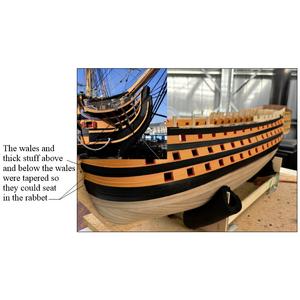To
Stuart Little, my order (through Australian Amazon), for 250 ml bottle of Littlefair's Dovetail Grey finally arrived!! It's an interesting product. It is certainly a grey stain however it is one in which its 'intensity' can be diminished by the addition of a bit of water before application. This is possible due to the stain being water based. Below is a photograph of the ship's deck and the lighter colour grey that I am seeking.
View attachment 461276
View attachment 461274
Using the Dovetail Grey, this deck colour can be fairly closely matched. It is a much better method than the "two wash" bleach method I used previously which although lightening the colour of the original Tanganyika timber, still retains an overall brownish hue. I will post some photos (when I have them in my phone, soon).
Littlefair's also produce another water-based stain called Driftwood Sand or Driftwood Grey. These products appear to stain the timber a lighter grey still with them being described as:
"Our Driftwood Collection has been specially formulated to both penetrate and coat new or old bare sanded wood to create a textural ‘salty’, weathered effect. It can also be applied to pressure treated, rough sawn or smooth planed wood and on both indoor and outdoor wood such as garden buildings, fences and gates (or the decking of model ships
- my words
). The more detailed or ‘grainy’ the surface is the greater the effect. So, it's great for distressed or reclaimed wood, from small craft items to large structures."
So, in summary, a good way to go and much easier and safer to use than bleaching the timber. Many thanks
Stuart Little. Thank you too for your comments Chris (
team118), from Rochester in New York.
While I have been waiting for the deck stain to arrive, I have been moving ahead with the
gun port linings. This is recommended in the Instructions and describe the technique they suggest as below:
"Note: for all gunports, the linings are to be painted red ochre, it should be noted however that the gunports without lids should have red ochre applied to the whole inner surface. For gunports with lids, the linings are painted red ochre and the 1mm deep lip should be the colour of the surrounding ships side.
The lower and middle deck gunports can now be lined. The way in which these gunports are lined differs from those gunports without lids. Line them with 1x6mm walnut strip in the same way as the gunports without lids except the lining must be set back 1mm from the ships side, refer to Plan Sheet 2, ‘Gunports with lids’. It is of absolute importance that the linings are set back into the openings by 1mm."
Placing the two side 1x6mm walnut timber is made difficult by only having the thickness of the plywood template hull thickness to glue onto, and once placed, there is a considerable amount of 'moving and positioning' of the piece to get it located correctly. The glue recommended is CA, but I have found a contact adhesive which sticks but takes time to harden a better approach. The glue I am using is KwikGrip which dries clear (see below):
View attachment 461275
As the gunports are all approximately the same size (with gun lids), I can use my guillotine to cut a large number of the same dimensions with slight oversize (about 0.2 mm) and then place these with the contact glue in to the openings and position effectively. I have pre-painted the 1x6mm walnut which makes the job a LOT easier for painting later. The same method is used for the upper and lower horizontal linings but this seems to go quicker as there is more surface area to glue the pieces to.
View attachment 461277
Interestingly too, you get quite good at placing these gunport linings. There are about 70 gunports which makes 70 x 4 = 280 gunport lining pieces. It takes a long time, but it does look effective when completed.
View attachment 461278
Next venture (apart from deck staining), is to move on to painting of the hull. Getting the right mix of Yellow Ochre is a challenge and will probably require a bit of experimentation to get the correct formula (as per the discussion previously). The 'right' colour is a difficult thing as the photographs and light conditions and 'period' of the colour the ship was painted has altered significantly over time.
Regards,
PeterG
Elapsed Time: 745 hours






